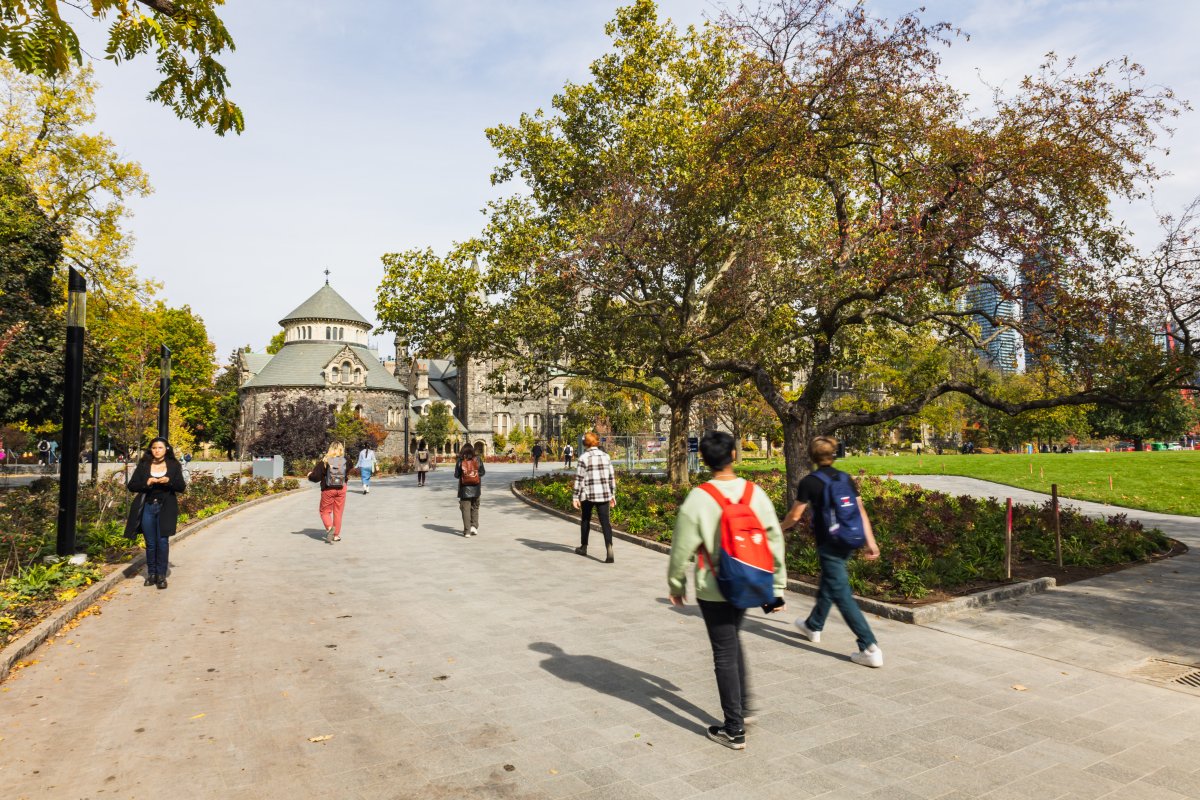Looking for more Indigenous news? Find our stories here.

The University of Toronto is the latest Canadian university to announce it’ll be covering tuition for First Nation students whose community’s traditional territory is on or near campus.
This move is one that’s popping up across Canada and the U.S. Earlier this year the University of Waterloo and Kwantlen Polytechnic University made similar announcements.
Covering tuition for First Nations students is being heralded by many as an act of meaningful reconciliation.
“This is a step towards honesty, making the words that they’re saying have meaning,” said Tristen White, a computer science and Indigenous studies student and member of the Mississaugas of the Credit First Nation.
“At university, there are a lot of events and they’re always doing territory acknowledgements, but when students are like, ‘It doesn’t mean anything, you’re just saying stuff’ — with covering tuition, now they’re trying something real.”
At the University of Toronto, tuition will be covered for Indigenous students from Alderville First Nation, Curve Lake First Nation, Hiawatha First Nation, Huron-Wendat First Nation, Mississauga First Nation, Mississaugas of the Credit First Nation, Mississaugas of Scugog Island First Nation, Mohawks of the Bay of Quinte and Six Nations of the Grand River.
The move to cover tuition is a response to the Truth and Reconciliation Commission’s (TRC) final report that was released in 2015.
Seven of the TRCs’ calls to action are dedicated to education — these calls target eliminating education gaps between Indigenous and non-Indigenous people and ending the backlog of First Nations students seeking education.

Get daily National news
“When you have a school like the University of Toronto say this is something we’re going to do, it will hopefully make other universities think … how can we do something similar?” said White.
“Maybe they’ll follow suit, maybe they’ll try something different but when you cut that cost down for First Nations students that are coming in, it opens the door.”

Universities covering tuition for some First Nation students are also inadvertently combatting the myth that education was free for Indigenous people to begin with.
White explains that each community is different. Some are able to allocate specific funds to support higher education, a few have community investments and some have nothing.
When First Nations students do get funding, there are often strict guidelines they must follow, like not taking time off school, not taking a gap year or maintaining a certain GPA that’s higher than the university’s requirements.
In White’s community, funding is provided to a set number of students, but there’s a waiting list.
After the University of Toronto made its announcement, White called his education counsellor to ask what it meant. They said the money they were putting towards his tuition will now go to students on the waiting list.
“That just gives more people the opportunity to go to school,” he said.

Not only will funding First Nations students increase access to education, White believes it will also encourage students to engage more in their culture.
“We hear a lot about urban Indigenous youth and losing this connection towards culture and heritage,” he said. “Providing funding to members with less restrictions — like taking time off school — will allow students who didn’t grow up on the rez the opportunity to take a year off, move home and do something like take an immersive language course.
“Students won’t have to make the choice of, do I go back home? Do I learn about my people or do I keep doing this education and push my language and culture further down the line?”
There’s widespread hope that these programs will continue to grow, increasing First Nations students access to education across the country.
“Let’s say this initiative gets more mainstream, more schools opt into doing something … communities are then able to afford this opportunity for students,” said White.
“It’ll just open more doors.”








Comments